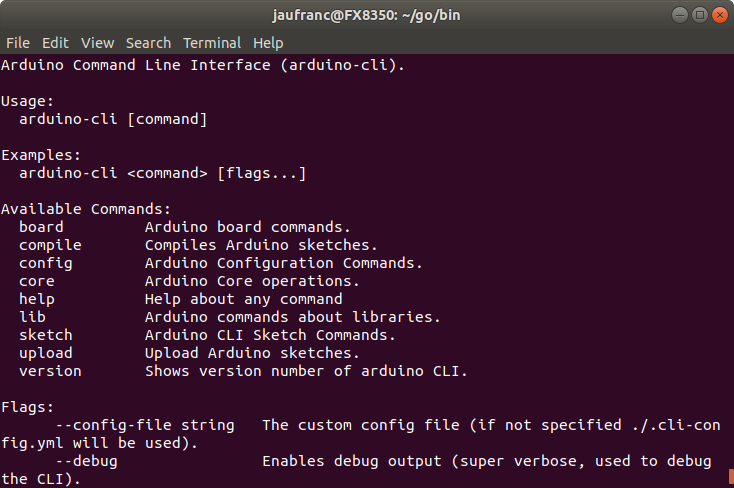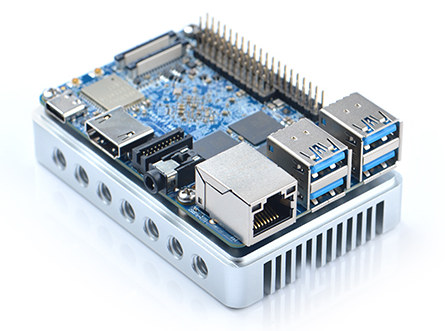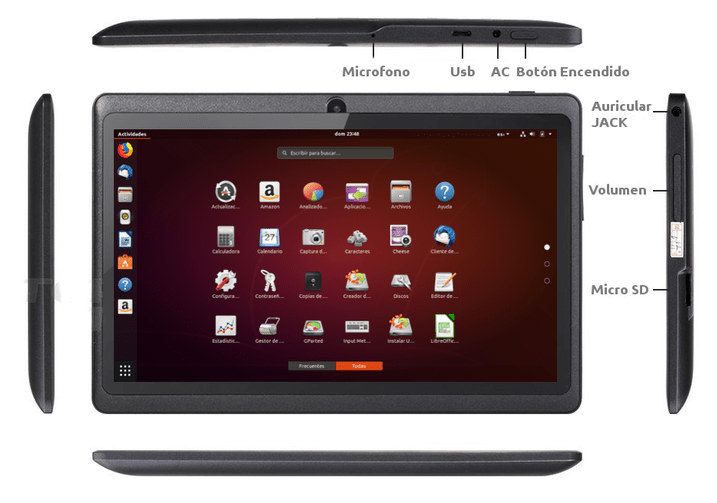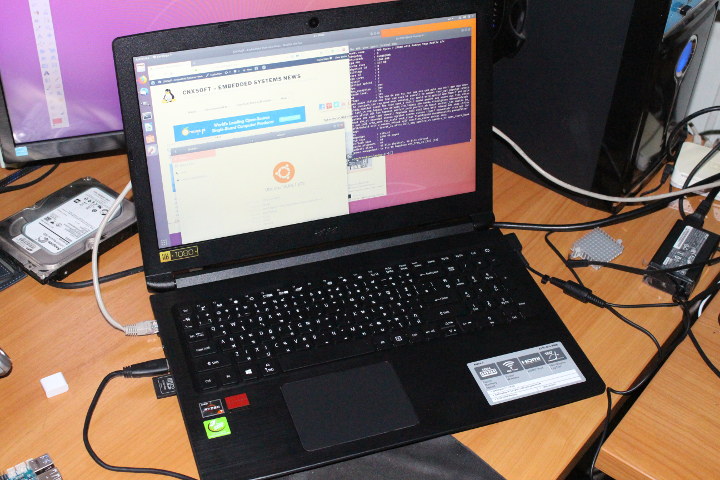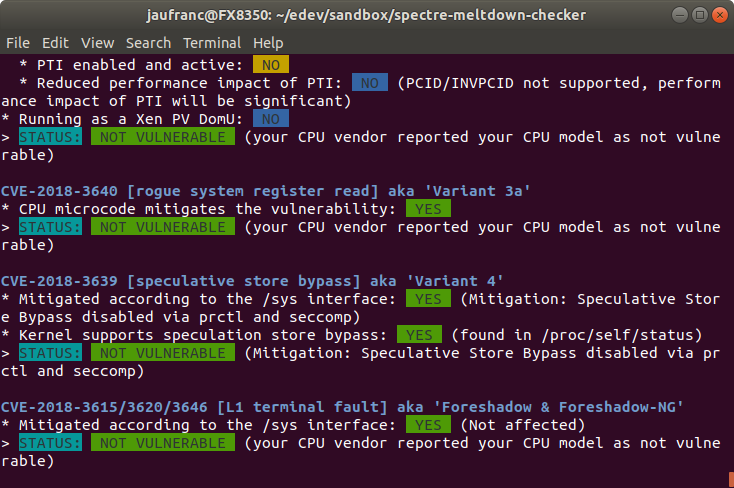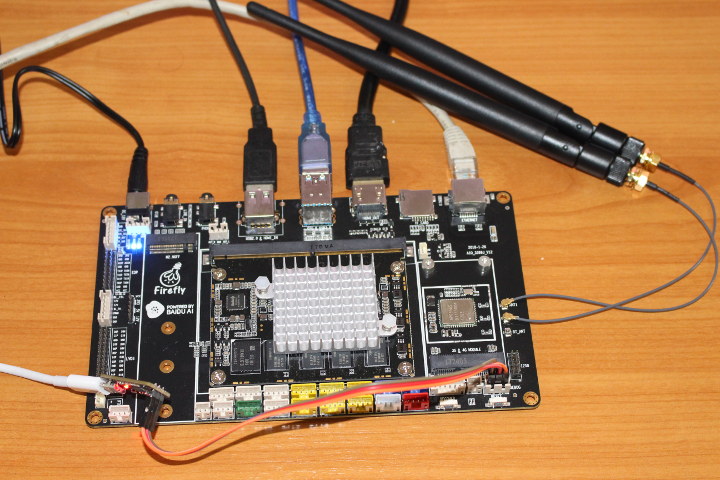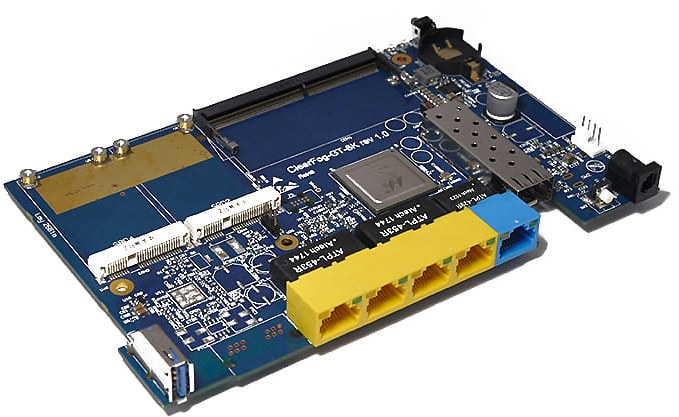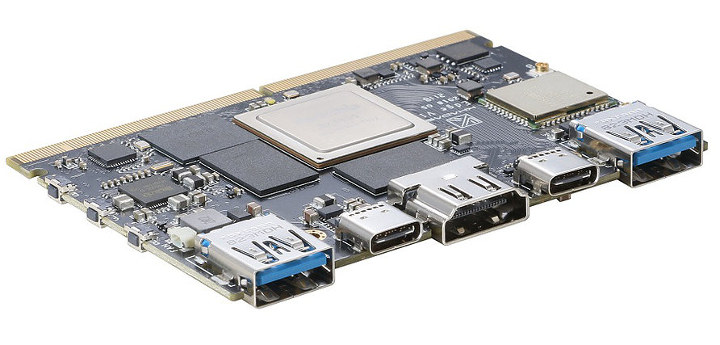So far, AFAIK the only official ways to program Arduino boards were through the Arduino IDE program, or the cloud-based Arduino Create which works in your web browser and does not require any installation on your computer. While graphical interfaces are nice and user-friendly, many of us are more productive while working using the command line, especially if commands can be scripted. So Arduino decided to work on a command line interface (CLI) for professional users, and have just announced a preview release. arduino-cli works in Windows, Linux, and Mac OS, and allows you install libraries, boards, and cores (e.g. esp32 Arduino core), compile the code, and upload the binary to the target board. If you want to get started quickly, you can download the binary “alpha” releases in the announcement board, but instead I opted to build the client myself as explained on Github. Everything below is done in […]
NanoPi M4 Raspberry Pi Inspired RK3399 Board Launched for $65 and Up
As expected, FriendlyELEC has now launched NanoPi M4 board, a lower cost version of NanoPC-T4 Rockchip RK3399 SBC, and mostly following Raspberry Pi form factor. How much you may ask? That would be $65 plus shipping for the 2GBRAM version, and $95 for the 4GB RAM version, which means it sells in the same ballpark as RockPro64 board. NanoPi M4 board specifications: SoC – Rockchip RK3399 big.LITTLE hexa-core processor with 2x Arm Cortex-A72 @ up to 2.0GHz, 4x Cortex-A53 @ up to 1.5GHz, a Mali-T864 GPU with support OpenGL ES1.1/2.0/3.0/3.1, OpenVG1.1, OpenCL, DX11, and AFBC, and a VPU with 4K VP9 and 4K 10-bit H265/H264 6decoding System Memory – Dual-channel 4GB LPDDR3-1866, or dual-channel 2GB DDR3-1866 Storage – eMMC module socket, micro SD card slot Video Output HDMI 2.0a up to 4K @ 60 Hz with HDCP 1.4/2.2 support 4-Lane MIPI-DSI connector Audio – 3.5mm headphone jack, HDMI digital audio […]
TableX Arm Linux Tablet Runs Armbian Ubuntu, To Launch for 89 Euros
If you want an Arm Linux laptop, you have already some choices with products such as Pine64 Pinebook, or Olimex TERES-I open source hardware laptop, but if instead you’d rather do without keyboard, and get an Arm Linux tablet, choices are much more limited, if any at all. Back in 2012, Allwinner A10 based PengPod 700 & 1000 tablets were available for the company has since folded, and this year, RasPad case launched to allow you to build your own thick tablet with a Raspberry Pi 3 (B+). However, if you want to normal looking tablet, your best option right now is to get an Android tablet and mess around to install Linux on it. That’s not for everyone, and the good news is that what looks like a proper – albeit low-end – Arm Linux tablet is coming to market soon with TableX. TableX preliminary hardware specifications: SoC – […]
Acer Aspire 3 A315-41G (AMD Ryzen 7 2700U) Laptop – Installing Ubuntu 18.04 and “Hidden” M.2 SSD Socket
Everyday I’m using a tower PC running Ubuntu 18.04 to take care of this blog, but when I travel it’s obviously not so convenient, so a few years ago I bought an Acer Aspire E5-421G laptop powered by an AMD A4-6210 processor with 4GB RAM, 512GB HDD, and a 14″ display. I installed Ubuntu on the laptop and it works, but with 4GB RAM, it’s not always usable while multitasking. For example I can run Thunderbird and Firefox, but if I ever make a Skype call for example, the system becomes unusable, and I have to close one of the programs. Tasks like video editing are also quite slow on the machine. So since I’m going to travel in a few weeks, I decided I needed a new laptop. My requirements were 8GB RAM, SSD and HDD support, a 15″ display, the ability to run Ubuntu 18.04, and possibly a […]
Check for Spectre, Meltdown, and L1 Terminal Fault Vulnerabilities with Spectre-meltdown-checker Script
Yesterday, we wrote a little bit about the new speculative execution vulnerability known as L1 Terminal Fault (L1TF) or Foreshadow, and a reader – MHSadri – pointed to an interesting script that checks for all three speculative execution vulnerabilities, and runs in Linux and BSD (FreeBSD, NetBSD, DragonFlyBSD) across multiple architectures: Intel x32, AMD64, Arm and ARM64. Other architectures will also work, but mitigation reporting may not be correct. So I tried it on my own machine, a computer running Ubuntu 18.04 on an AMD FX8350 processor. Installation is easy:
|
1 2 |
git clone https://github.com/speed47/spectre-meltdown-checker/ cd spectre-meltdown-checker |
The developer recommends to check the script manually first, just for security sake. You can have two way to run it: either directly inside your OS, or via docker which may be a better idea since it would not be able to mess with your system especially I had to run it with sudo to avoid permission issues. Here’s […]
AIO-3399J Development Board Review with Ubuntu 16.04
Regular readers will know that Firefly team sent me several of their Rockchip boards for evaluation, and I started with a review of ROC-RK3328-CC development board powered by Rockchip RK3328 processor. This time, I went with the high-end AIO-3399J board comprised of a features-packed baseboard and a Rockchip RK3399 system-on-module. Just like with the previous review, I’ve decided to focus on Linux support, in this case Xunbuntu 16.04, and I’ll do an Android review on the company releases Android 8.1 for Firefly-RK3399 board. First Boot with AIO-3399J Board Before booting the board, I inserted the heatsink, and connected the provided WiFi antennas. I also connected some devices and cables, including a mouse, the male to male USB cable to the top USB 3.0 (OTG) port for firmware update, a HDMI cable to my TV, and Ethernet cable, as well as the serial debug board. The final step was to connect […]
ClearFog GT 8K is a High-End Networking SBC Powered by Marvell ARMADA A8040 Processor
A few years ago, SolidRun launched ClearFog Pro and Base router boards based on Marvell ARMADA 388 Armv7 (32-bit) processor, and about a year later, the company introduced MACCHIATObin networking board powered by a more powerful Marvell ARMADA 8040 quad core Cortex A72 processor. The company has now given an upgraded to its ClearFog family with ClearFog GT 8K networking board powered on the same ARMADA A8040 processor as on the community board, and offering support for up to 16GB RAM, 6 network interfaces including one 10GbE SFP+ cage , and three mPCIe slots. ClearFog GT 8K specifications: SoC – Marvell ARMADA A8040 quad-core Cortex A72 processor up to 2GHz (commercial), up to 1.6 GHz (industrial) Memory – DIMM slot for up to 16GB DDR4 Storage – Up to 128GB eMMC flash, 64 Mbit SPI flash, micro SD slot, M.2 SSD via optional M.2 mPCIe adapter Connectivity 4x 1GbE switched LAN […]
Khadas Edge is Both a Standalone Board and a System-on-Module powered by Rockchip RK3399
One of the two most common type of Arm boards are single board computers with everything from processor to memory/storage to ports is placed on a single PCB, and system-on-modules with processor, memory and storage, and sometimes some extra chips with for network connectivity, audio and power management that are supposed to be inserted into a baseboard exposing connectors and headers. The upcoming Khadas Edge board is a little different since it combines both categories into one board with USB receptacles and HDMI output as well as 314-pin MXM3 edge connector to connect to Khadas Captain baseboard, or any other custom compatible baseboard. Khadas Edge will come in three variants (Basic/Pro/Max) with the following specifications: SoC – Rockchip RK3399 hexa core processor with 2x Arm Cortex-A72 up to 1.8GHz, 4x Cortex-A53 up to 1.5GHz, Arm Mali T864 GPU with support for OpenGL ES1.1/2.0/3.0/3.1, OpenVG1.1, OpenCL, DX11, VPU with4K VP9 and 4K […]


